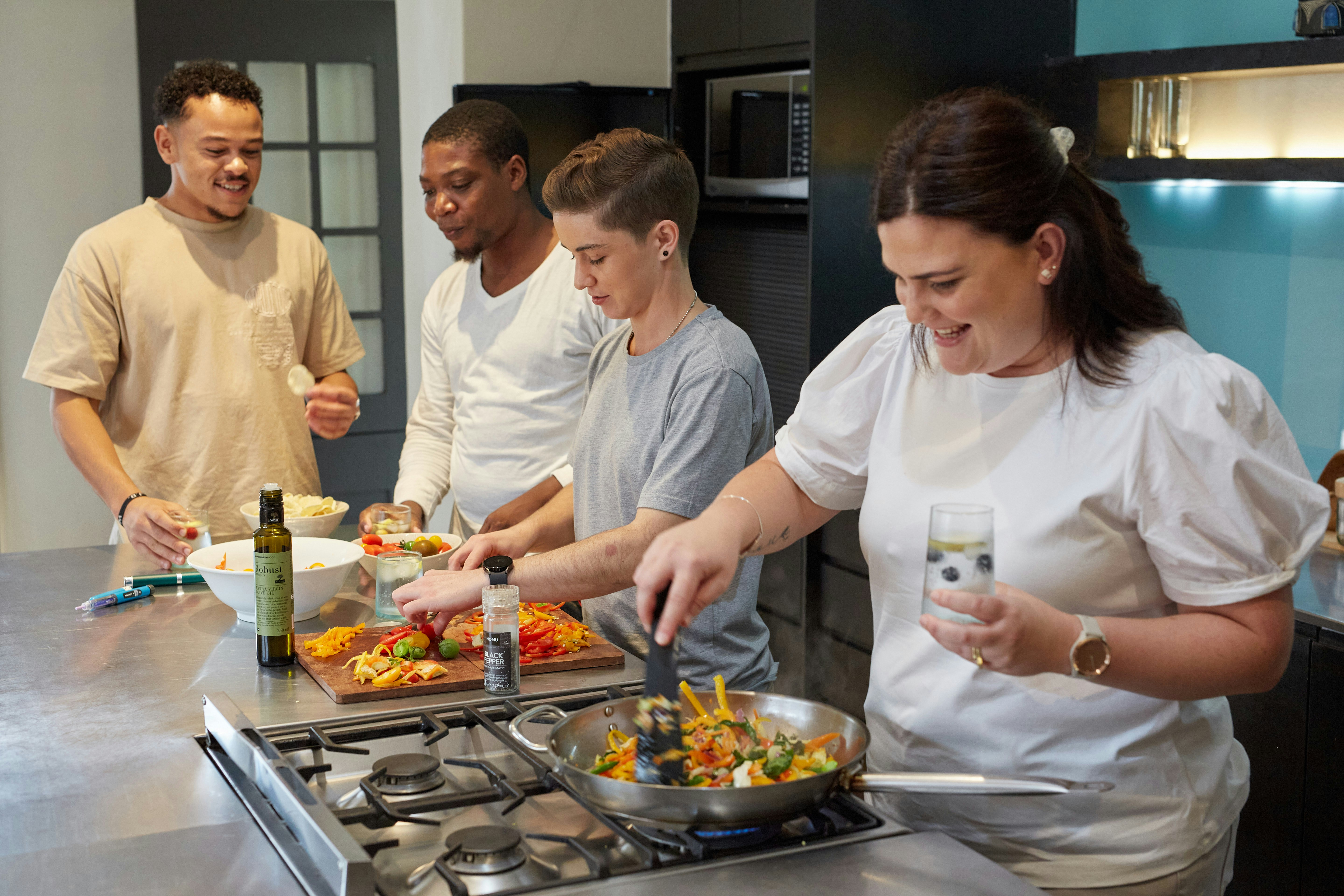
Improve Your Cooking Skills With Interactive Small Group Classes
Home cooking offers a fresh way to enjoy meals and boost your well-being. Joining small group lessons brings a sense of excitement to preparing food, as you actively chop, stir, and taste alongside others. These interactive sessions invite you to share ideas and ask questions with people who care about good food just as much as you do. The friendly atmosphere makes it easier to try new recipes and keep up with healthier habits. By learning together and supporting each other, you build skills and confidence that last long after the class ends.
This guide shows how interactive small group cooking classes spark new habits. You’ll find clear tips on picking the right workshop, preparing ahead of time, and getting the most out of each session. By the end, you’ll know how to jump in with confidence and cook meals that taste great and fuel your well-being.
Benefits of Interactive Small Group Classes
- Hands-on practice helps you improve skills faster than watching videos.
- Immediate feedback from instructors helps you correct mistakes on the spot.
- Small class sizes ensure you get personal guidance.
- Group discussion offers new recipe ideas and flavor combinations you might not try alone.
- Cooking with peers builds accountability and keeps you motivated.
Jumping in with real tools and ingredients boosts your confidence. You don’t just read a recipe—you chop, stir, and taste. That makes it easier to recall steps when you cook at home.
Sharing the workspace creates a sense of teamwork. You swap tips on knife cuts or seasoning tricks. By the end, you feel part of a mini cooking community where everyone learns together.
Choosing the Right Class
Look for workshops that focus on healthy ingredients and balanced meals. Check if the menu covers lean proteins, seasonal produce, and whole grains. A clear syllabus helps you know what to expect each week.
Consider the instructor’s background. A chef with nutrition credentials brings dual expertise. Read reviews or testimonials to see if past students felt supported and engaged.
Pay attention to class size. Aim for groups of six to ten. That ratio lets the teacher offer individual tips while keeping the energy dynamic. Larger groups can feel impersonal, and smaller ones may lack diverse perspectives.
Venue matters too. A kitchen with good ventilation, modern equipment, and ample counter space sets you up for success. You don’t want to juggle overcrowded stations or struggle with outdated tools.
Essential Cooking Techniques Covered
Most small group classes start with knife skills. You learn proper grip, basic cuts, and safety tips. With that foundation, you chop vegetables and fillet proteins with ease.
Next, you explore cooking methods like sautéing, roasting, and steaming. Instructors show you how heat and timing change texture and flavor. You practice adjusting heat levels to prevent burning or undercooking.
Sauces and dressings often become the highlight. You whisk emulsions, blend herbs, and balance acid, fat, and seasoning. Armed with a few go-to sauces, you can elevate everyday dishes with a simple drizzle.
Finally, plating techniques teach you how presentation impacts appetite. You arrange colors and textures so every plate looks as good as it tastes. That attention to detail turns a basic meal into a dining experience.
Preparing for Your First Session
Read the class outline before you arrive. Gather any pantry staples listed, like olive oil, salt, or spices. That keeps you focused on fresh ingredients provided by the school.
Wear closed-toe shoes and comfortable clothing. Bring an apron if you own one, and tie back long hair. You don’t want distractions or spills slowing you down.
Show up ten minutes early to find your station and meet classmates. This brief chat breaks the ice and gets you comfortable working side by side.
If you’ve never cooked a souffle or seared salmon perfectly, don’t worry. Instructors expect beginners and pros to learn side by side. The goal is progress, not perfection.
Tips for Maximizing Learning
- Ask questions as soon as they come up. Clarifying details helps you avoid mistakes.
- Take quick notes on measurements and timing. Writing down a tip helps you remember it later.
- Swap roles with a partner. One chops while the other stirs, then you switch. That way, you practice more skills.
- Taste your work at each step. Adjust seasoning early so final dishes have the right flavor.
- Record a short video of tricky techniques. Reviewing it at home boosts your confidence when you try recipes later.
Pair these steps with a positive mindset. Stay curious, and treat mistakes as learning moments. You’ll build skill and confidence faster.
Keep a habit log after class. Write down one thing you’ll try that week. Tracking progress helps develop new routines and stick with them.
Sample Interactive Activities
Team recipe challenge: The instructor divides you into pairs. Each pair picks local ingredients from a shared basket and creates a healthy appetizer. You work together on flavors and plating, then everyone tastes and votes.
Speed station relay: You rotate every five minutes through stations for chopping, sautéing, seasoning, and plating. This timed exercise improves speed and accuracy under a fun deadline.
Flavor exploration workshop: You taste oils, vinegars, herbs, and spices blindly. Then you guess each ingredient and learn how to combine them in balanced dressings or marinades.
Cook-off finale: At the end of the course, you team up to present a three-course meal using techniques you practiced. This event adds a friendly competitive element and reinforces your new skills.
Interactive group classes teach you practical techniques and new recipes. They help you develop consistent cooking habits and boost your confidence to try new flavors.